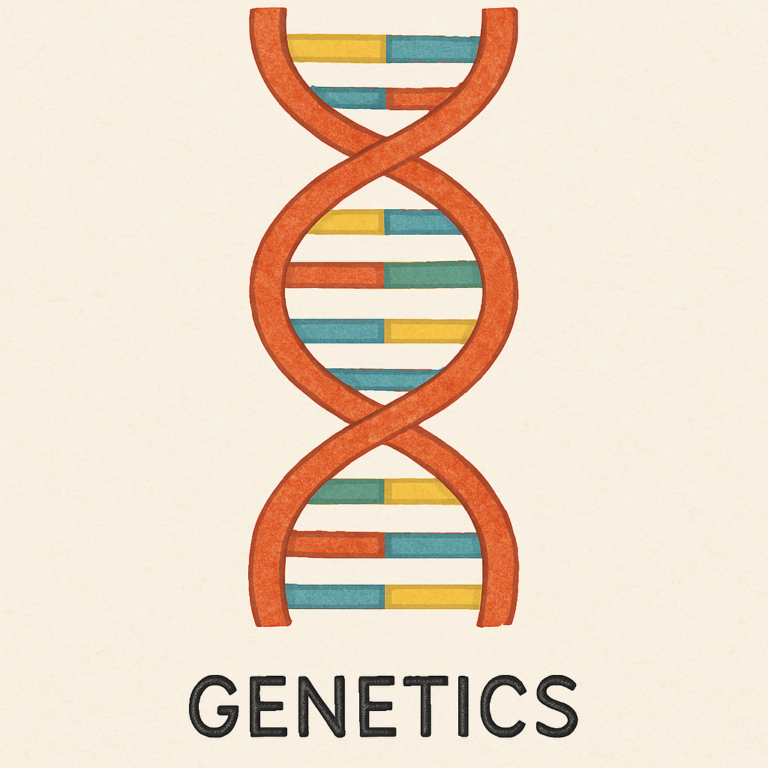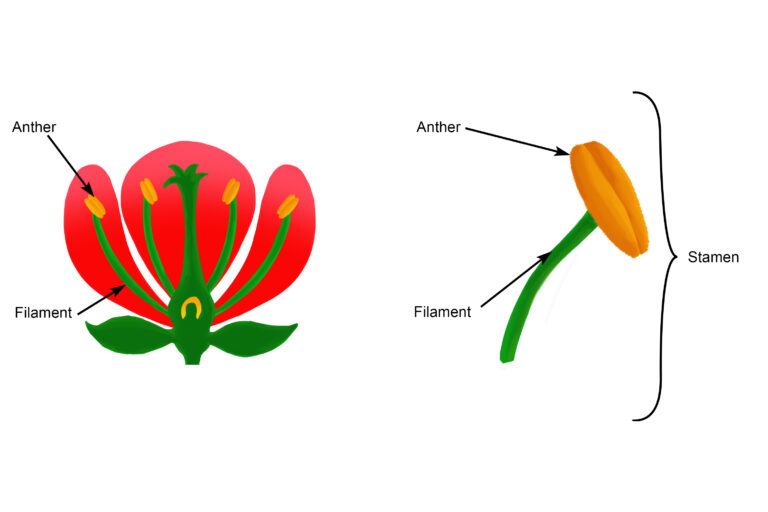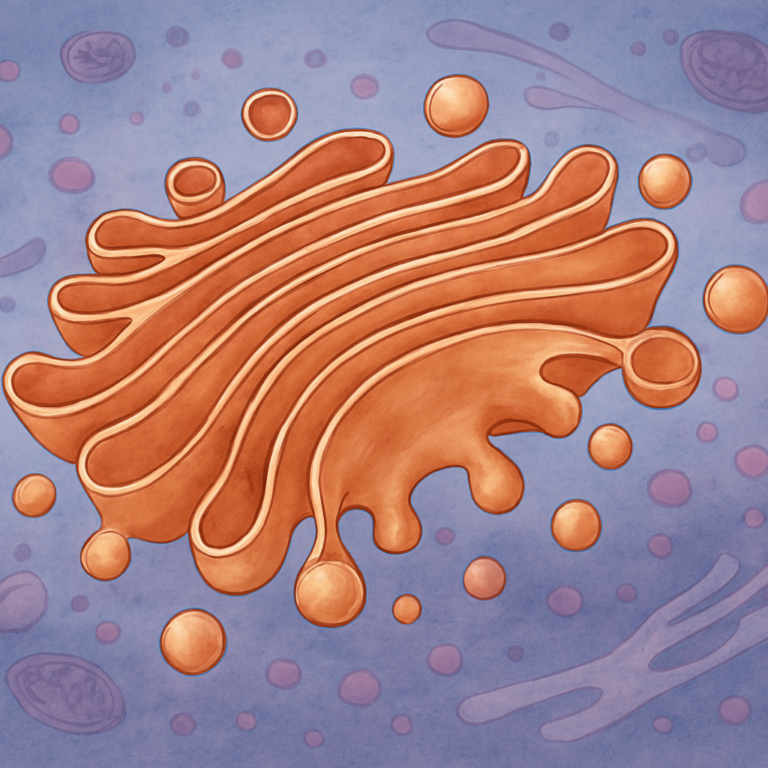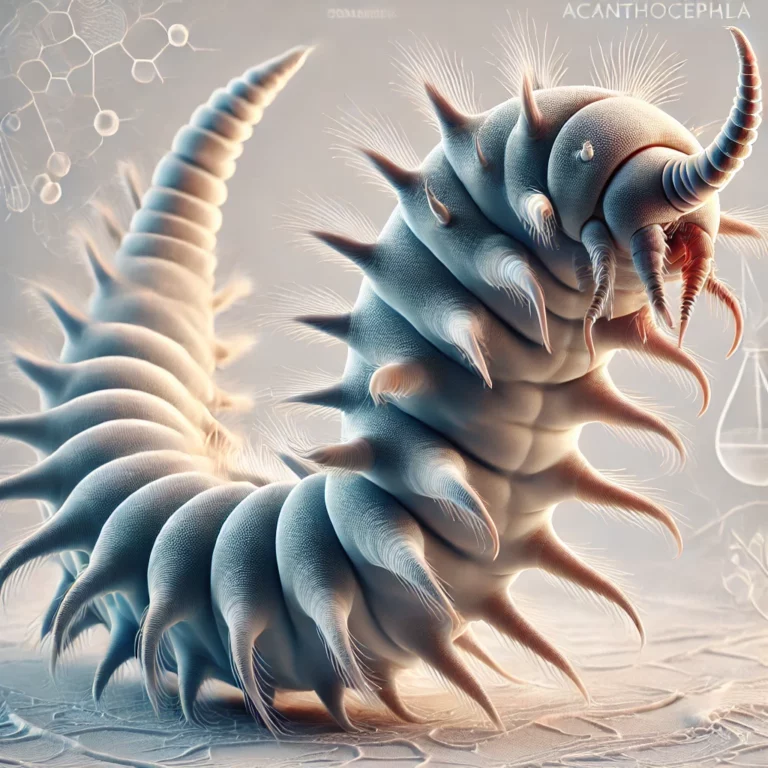Ben ritrovati, amici esploratori! Oggi ci inoltreremo in un viaggio straordinario alla scoperta degli estremi della vita sulla Terra, un’avventura che ci porterà a conoscere creature incredibili e a sfidare i limiti della nostra immaginazione. Parleremo di record biologici, di giganti e di minuscoli esseri, di organismi antichissimi e di incredibili adattamenti. E per rendere il nostro viaggio ancora più avvincente, ho incluso alcune notizie fresche fresche dal mondo della scienza!
Il Gigante della Natura: Dimensioni Incredibili
Sapevate che nel 2023 è stata scoperta, al largo delle coste dell’Antartide, una nuova specie di balenottera azzurra? Secondo uno studio pubblicato su Scientific Reports, questa balenottera, ribattezzata “balenottera azzurra antartica”, potrebbe essere ancora più grande della balenottera azzurra “classica”. Gli scienziati stanno ancora analizzando i dati, ma questa scoperta potrebbe riscrivere i libri di biologia!
E a proposito di giganti, un recente articolo del National Geographic ha riportato la notizia di una sequoia gigante ancora più alta di Hyperion, l’albero più alto del mondo. Questa nuova sequoia, che si trova in un parco nazionale della California, misura ben 116 metri! Un vero e proprio grattacielo naturale, testimone di secoli di storia.
Ma non solo animali e piante possono raggiungere dimensioni straordinarie. Un team di ricercatori del Lawrence Berkeley National Laboratory ha recentemente scoperto un nuovo tipo di batterio gigante che vive nelle mangrovie dei Caraibi. Questo batterio, lungo circa un centimetro, è visibile a occhio nudo e ha una struttura interna sorprendentemente complessa. La scoperta, pubblicata su Science, apre nuove prospettive nello studio della vita microbica.
Il Piccolo Meraviglioso: L’Incredibile Mondo Microscopico
Nel mondo microscopico, le dimensioni contano meno della complessità e dell’adattabilità. Un articolo pubblicato su Nature ha recentemente evidenziato il ruolo fondamentale dei batteri nell’ecosistema globale. Questi microrganismi, pur essendo invisibili a occhio nudo, influenzano il clima, la fertilità del suolo, la salute umana e molto altro ancora.
E a proposito di virus, una notizia pubblicata su The Lancet ha riportato la scoperta di un nuovo virus gigante in Siberia. Questo virus, che era rimasto congelato nel permafrost per migliaia di anni, è stato “risvegliato” dai ricercatori e si è dimostrato ancora infettivo. La scoperta solleva importanti questioni sulla sicurezza del disgelo del permafrost e sui potenziali rischi per la salute umana.
Il Più Antico: Testimoni del Tempo
Un team di scienziati australiani ha recentemente scoperto in una miniera d’oro del Sudafrica alcuni dei microrganismi più antichi mai trovati. Questi organismi, che vivono a 3 chilometri di profondità, si nutrono di rocce e hanno un metabolismo estremamente lento. La scoperta, pubblicata su Nature Communications, potrebbe fornire nuove informazioni sull’origine della vita sulla Terra.
E a proposito di organismi antichi, uno studio pubblicato su PNAS ha dimostrato che alcuni batteri possono sopravvivere per milioni di anni in uno stato di quiescenza. Questi batteri, intrappolati in cristalli di sale, sono stati “risvegliati” dai ricercatori e hanno ripreso a crescere e a riprodursi. Una scoperta che ci fa riflettere sulla straordinaria capacità di adattamento della vita.
Extremophiles: I Maestri dell’Adattamento
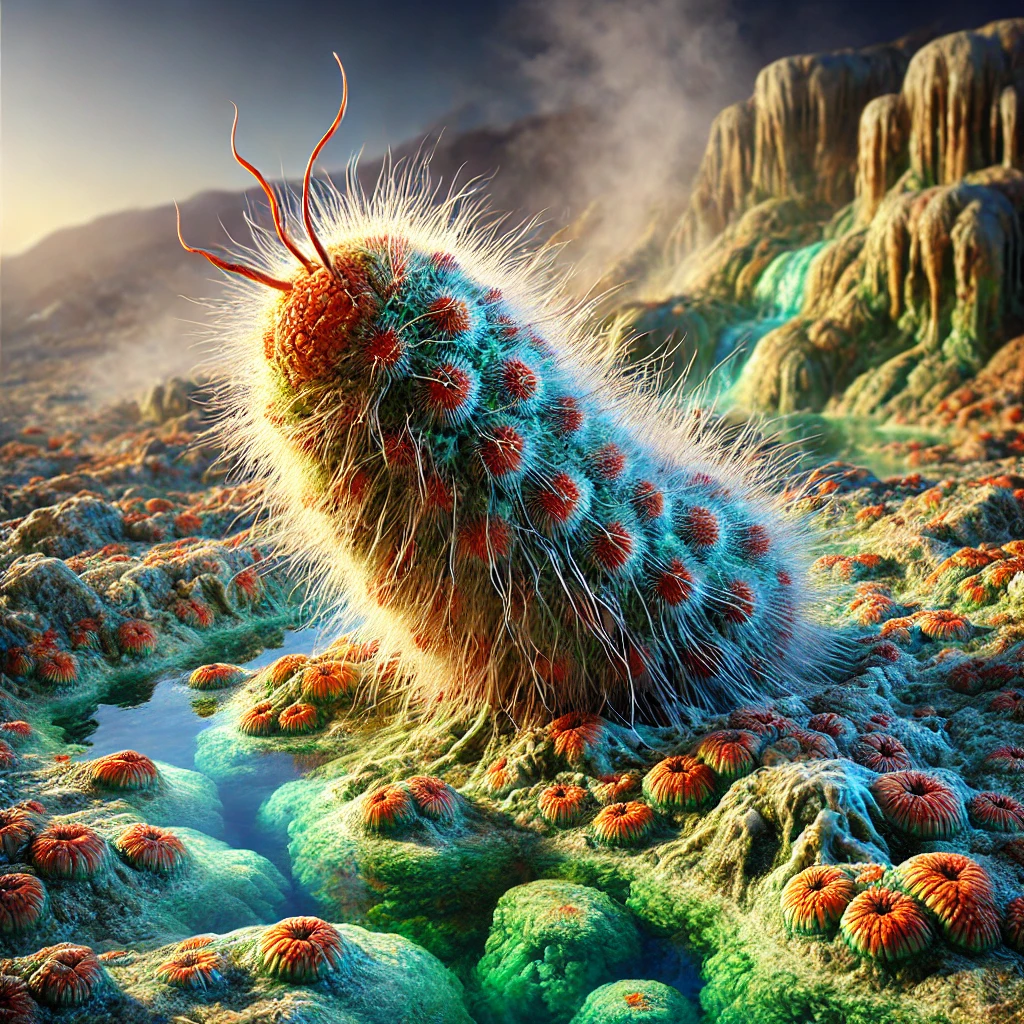
Gli extremophiles continuano a stupirci con la loro capacità di sopravvivere in ambienti impossibili. Un articolo pubblicato su Astrobiology ha riportato la scoperta di microrganismi che vivono nelle profondità della Fossa delle Marianne, il punto più profondo degli oceani. Questi organismi, sottoposti a pressioni enormi e a temperature gelide, rappresentano un esempio estremo di adattamento.
E a proposito di ambienti estremi, un team di ricercatori della NASA ha recentemente scoperto un nuovo tipo di termofilo che vive nelle sorgenti termali del Parco Nazionale di Yellowstone. Questo microrganismo, che cresce a temperature superiori a 80°C, potrebbe fornire nuove informazioni sull’origine della vita sulla Terra e sulla possibilità di vita extraterrestre.
La Sfida della Coltivazione e le Prospettive Future
Coltivare gli extremophiles in laboratorio rimane una sfida, ma i ricercatori stanno facendo progressi. Un articolo pubblicato su Applied and Environmental Microbiology ha descritto una nuova tecnica per coltivare batteri che vivono in ambienti con alta concentrazione di arsenico. Questa tecnica potrebbe essere utile per studiare i meccanismi di resistenza all’arsenico e per sviluppare nuove strategie di biorisanamento.
Lo studio degli extremophiles ha un potenziale enorme per la biotecnologia, la medicina e l’esplorazione spaziale. I loro enzimi, ad esempio, sono utilizzati in molti processi industriali, dalla produzione di detersivi alla sintesi di farmaci. Inoltre, gli extremophiles potrebbero aiutarci a sviluppare nuove tecnologie per la produzione di biocarburanti, il trattamento delle acque reflue e la bonifica di siti contaminati.
Un Viaggio Continuo
Il nostro viaggio alla scoperta dei record biologici si conclude qui, ma l’esplorazione del mondo naturale non si ferma mai. Ogni nuova scoperta ci ricorda quanto sia straordinaria la vita sulla Terra e quanto ancora ci sia da imparare. Continuiamo a esplorare, a studiare, a proteggere questo pianeta meraviglioso che ci ospita.
Spero che questo articolo, arricchito con le ultime notizie dal mondo della scienza, vi abbia appassionato e incuriosito. Ricordate: la conoscenza è un viaggio senza fine, e ogni scoperta è un passo avanti verso la comprensione del nostro posto nell’universo.
Riferimenti
The sources used in the previous response, formatted in ATA7 style, are:
- Albers, S.-V., A. Szabo, and A. J. M. Driessen. 2003. Archaeal homolog of bacterial type IV prepilin signal peptidases with broad substrate specificity. J. Bacteriol. 185:3918–3925.
- Bartolucci, S., M. Rossi, and R. Cannio. 2003. Characterization and functional complementation of a nonlethal deletion in the chromosome of a -glycosidase mutant of Sulfolobus solfataricus. J. Bacteriol. 185:3948–3957.
- Bell, S. D., and S. P. Jackson. 2001. Mechanism and regulation of transcription in Archaea. Curr. Opin. Microbiol. 4:208–213.
- Bohlke, K., F. M. Pisani, M. Rossi, and G. Antranikian. 2002. Archaeal DNA replication: spotlight on a rapidly moving field. Extremophiles 6:1–14.
- Ciaramella, M., F. M. Pisani, and M. Rossi. 2002. Molecular biology of extremophiles: recent progress on the hyperthermophilic archaeon Sulfolobus. Antonie Leeuwenhoek 81:85–97.
- Fiorentino, G., R. Cannio, M. Rossi, and S. Bartolucci. Transcriptional regulation of the gene encoding an alchol dehydrogenase in the archaeon Sulfolobus solfataricus involves multiple factors and control elements. J. Bacteriol. 185:3926–3934.
- Jolivet, E., F. Matsunaga, Y. Ishino, P. Forterre, D. Prieur, and H. Mylly-kallio. 2003. Physiological responses of the hyperthermophilic archaeon “Pyrococcus abyssi” to DNA damage caused by ionizing radiation. J. Bacteriol. 185:3958–3961.
- Schut, G. J., S. D. Brehm, S. Datta, and M. W. W. Adams. Whole-genome DNA microarray analysis of a hyperthermophile and an archaeon: Pyrococcus furiosus grown on carbohydrates or peptides. J. Bacteriol. 185:3935–3947.
- van der Oost, J., M. Ciaramella, M. Moracci, F. M. Pisani, M. Rossi, and W. M. de Vos. 1998. Molecular biology of hyperthermophilic Archaea. Adv. Biochem. Eng. Biotechnol. 61:87–115.
- Richtzenhain, L.J., Cortez, A., Heinemann, M.B., Soares, R.M., Sakamoto, S.M., Vasconcellos, S.A., Higa, Z.M., Scarcelli, E. and Genovez, M.E. (2002). A multiplex PCR for the detection of Brucella spp. and Leptospira spp. DNA from aborted bovine fetuses. Veterinary Microbiology 87: 139-147.
- Rothschild, L.J. and Mancinelli, R.L. (2001). Life in extreme environments. Nature 490: 1092-1101.
- Schiraldi, C. and DeRosa, M. (2002). The production of biocatalysts and biomolecules from extremophiles. Trends in Biotechnology 20: 151-521.
- Schleper, C., Puehler, G., Holz, I., Gambacorta, A., Janekovic, D., Santarius, U., Klenk, H.P. and Zillig, W. (1995). Picrophilus gen. nov. fam. nov.: A novel aerobic, heterotrophic, thermoacidophilic genus and family comprising archaea capable of growth around pH 0. Journal of Bacteriology 177: 7050-7059.
- Brock, T. D., and Freeze, H. (1969). Thermus aquaticus gen. n. and sp. n., a nonsporulating extreme thermophile. J. Bacteriol. 98, 289–297.
- Chien, A., Edgar, D. B., and Trela, J. M. (1976). Deoxyribonucleic acid polymerase from the extreme thermophile Thermus aquaticus. J. Bacteriol. 127, 1550–1557.
- Aakra, A., Utåker, J. B., Nes, I. F., and Bakken, L. R. (1999). An evaluated improvement of the extinction dilution method for isolation of ammonia-oxidizing bacteria. J. Microbiol. Methods 39, 23–31.
- Abbott, C., and Pearce, D. A. (2021). “Antarctic Bacteria as Astrobiological Models” in Extremophiles as Astrobiological Models. eds. J. Seckbach and H. Stan-Lotter (In: Scrivener Publishing LLC.)
- Alain, K., and Querellou, J. (2009). Cultivating the uncultured: limits, advances and future challenges. Extremophiles 13, 583–594.
- Alkayyali, T., Pope, E., Wheatley, S. K., Cartmell, C., Haltli, B., Kerr, R. G., et al. (2021). Development of a microbe domestication pod (MD pod) for in situ cultivation of micro-encapsulated marine bacteria. Biotechnol. Bioeng. 118, 1166–1176.
- Alvarez-Barrientos, A., Arroyo, J., Cantón, R., Nombela, C., and Sánchez-Pérez, M. (2000). Applications of flow cytometry to clinical microbiology. Clin. Microbiol. Rev. 13, 167–195.
- Antunes, A., Rainey, F. A., Wanner, G., Taborda, M., Pätzold, J., Nobre, M. F., et al. (2008b). A new lineage of halophilic, wall-less, contractile bacteria from a brine-filled deep of the Red Sea. J. Bacteriol. 190, 3580–3587.
- Antunes, A., Taborda, M., Huber, R., Moissl, C., Nobre, M. F., and da Costa, M. S. (2008a). Halorhabdus tiamatea sp. nov., a non-pigmented, extremely halophilic archaeon from a deep-sea, hypersaline anoxic basin of the Red Sea, and emended description of the genus Halorhabdus. Int. J. Syst. Evol. Microbiol. 58, 215–220.
- Banat, I. M., Satpute, S. K., Cameotra, S. S., Patil, R., and Nyayanit, N. V. (2014). Cost effective technologies and renewable substrates for biosurfactants’ production. Front. Microbiol. 5:697.
- Batani, G., Bayer, K., Böge, J., Hentschel, U., and Thomas, T. (2019). Fluorescence in situ hybridization (FISH) and cell sorting of living bacteria. Sci. Rep. 9:18618.
- Bellali, S., Lagier, J. C., Raoult, D., and Bou Khalil, J. (2019). Among live and dead Bacteria, the optimization of sample collection and processing remains essential in recovering gut microbiota components. Front. Microbiol. 10:1606.
- Benaud, N., Chelliah, D. S., Wong, S. Y., and Ferrari, B. C. (2022). Soil substrate culturing approaches recover diverse members of Actinomycetota from desert soils of Herring Island. Extremophiles 26:24.
- Bender, K., Glover, K., Archey, A., and Barton, H. (2020). The impact of sample processing and media chemistry on the culturable diversity of bacteria isolated from a cave. Int. J. Speleol. 49, 209–220.
- Bendia, A. G., Araujo, G. G., Pulschen, A. A., Contro, B., Duarte, R. T. D., Rodrigues, F., et al. (2018). Surviving in hot and cold: psychrophiles and thermophiles from Deception Island volcano. Extremophiles 22:917.
- Berdy, B., Spoering, A. L., Ling, L. L., and Epstein, S. S. (2017). In situ cultivation of previously uncultivable microorganisms using the Ichip. Nat. Protoc. 12, 2232–2242.
- Bollmann, A,. Lewis, K., and Epstein, S.S. (2007). Incubation of environmental samples in a diffusion chamber increases the diversity of recovered isolates. Appl. Environ. Microbiol. 73:6386–6390.
- Bonch-Osmolovskaya, E. A. (2010). High-temperature deep-subsurface microbial communities as a possible equivalent of ancient ecosystems. Paleontol. J. 44, 851–859.
- Bull, A. T., and Goodfellow, M. (2019). Dark, rare and inspirational microbial matter in the extremobiosphere: 16 000 m of bioprospecting campaigns. Microbiology 165, 1252–1264.
- Burns, D. G., Camakaris, H. M., Janssen, P. H., and Dyall-Smith, M. L. (2004). Combined use of cultivation-dependent and cultivation-independent methods indicates that members of most haloarchaeal groups in an Australian crystallizer pond are cultivable. Appl. Environ. Microbiol. 70, 5258–5265.
- Cavicchioli, R. (2002). Extremophiles and the search for extraterrestrial life. Astrobiology 2, 281–292.
- Chaudhary, D. K., Khulan, A., and Kim, J. (2019). Development of a novel cultivation technique for uncultured soil bacteria. Sci. Rep. 9:6666.
- Chaudhary, D. K., and Kim, J. (2019). Experimental setup for a diffusion bioreactor to isolate Unculturable soil Bacteria. Bioanalysis 9:e3388.
- Cross, K. L., Campbell, J. H., Balachandran, M., Campbell, A. G., Cooper, C. J., Griffen, A., et al. (2019). Targeted isolation and cultivation of uncultivated bacteria by reverse genomics. Nat. Biotechnol. 37, 1314–1321.
- Cury, J., Jurelevicius, D., Villela, H., Jesus, H., Peixoto, R., Schaefer, C., et al. (2015). Microbial diversity and hydrocarbon depletion in low and high diesel-polluted soil samples from Keller peninsula. Antarctic Sci. 27, 263–273.
- da Silva, M. B. F., da Mota, F. F., Jurelevicius, D., de Carvalho Azevedo, V. A., da Costa, M. M., Góes-Neto, A., et al. (2022). Genomic analyses of a novel bioemulsifier-producing Psychrobacillus strain isolated from soil of King George Island, Antarctica. Polar Biol. 45, 691–701.
- Daly, M. J. (2011). Deinococcus radiodurans: revising the molecular basis for radiation effects on cells. Extremophiles Handbook 1117–1133.
- Das, N., Tripathi, N., Basu, S., Bose, C., Maitra, S., and Khurana, S. (2015). Progress in the development of gelling agents for improved culturability of microorganisms. Front. Microbiol. 6:698.
- DasSarma, P., Antunes, A., Simões, M. F., and DasSarma, S. (2020). Earth’s stratosphere and microbial life. Curr. Issues Mol. Biol. 38, 197–244.
- Davis, K. E., Joseph, S. J., and Janssen, P. H. (2005). Effects of growth medium, inoculum size, and incubation time on culturability and isolation of soil bacteria. Appl. Environ. Microbiol. 71, 826–834.
- de Jesus, H. E., Peixoto, R. S., Cury, J. C., van Elsas, J. D., and Rosado, A. S. (2015). Evaluation of soil bioremediation techniques in an aged diesel spill at the Antarctic peninsula. Appl. Microbiol. Biotechnol. 99, 10815–10827.
- de Bruyn, J. C., Boogerd, F. C., Bos, P., and Kuenen, J. G. (1990). Floating filters, a novel technique for isolation and enumeration of fastidious, acidophilic, iron-oxidizing, autotrophic bacteria. Appl Environ Microbiol. 56, 2891–2894.
- Diakite, A., Dubourg, G., Dione, N., Afouda, P., Bellali, S., Ngom, I. I., et al. (2020). Optimization and standardization of the culturomics technique for human microbiome exploration. Sci. Rep. 10:9674.
- Díaz-García, L., Huang, S., Spröer, C., Sierra-Ramírez, R., Bunk, B., Overmann, J., et al. (2021). Dilution-to-stimulation/extinction method: a combination enrichment strategy to develop a minimal and versatile Lignocellulolytic bacterial consortium. Appl. Environ. Microbiol. 87:e02427.
- Dowell, F., Cardman, Z., Dasarathy, S., Kellermann, M. Y., Lipp, J. S., Ruff, S. E., et al. (2016). Microbial communities in methane- and Short chain alkane-rich hydrothermal sediments of Guaymas Basin. Front. Microbiol. 29:17.
- Durán-Viseras, A., Andrei, A. Ş., Vera-Gargallo, B., Ghai, R., Sánchez-Porro, C., and Ventosa, A. (2021). Culturomics-based genomics sheds light on the ecology of the new haloarchaeal genus Halosegnis. Environmental Microbiology 23, 3418–3434.
- Esau, L., Zhang, G., Sagar, S., Stingl, U., Bajic, V. B., and Kaur, M. (2019). Mining the deep Red-Sea brine pool microbial community for anticancer therapeutics. BMC Complement. Altern. Med. 19:142.
- Espina, G., Muñoz-Ibacache, S. A., Cáceres-Moreno, P., Amenabar, M. J., and Blamey, J. M. (2022). From the discovery of Extremozymes to an enzymatic product: roadmap based on their applications. Front. Bioeng. Biotechnol. 12:752281.
- Ferrari, B. C., Winsley, T., Gillings, M., and Binnerup, S. (2008). Cultivating previously uncultured soil Bacteria using a soil substrate membrane system. Nat. Protoc. 3, 1261–1269.
- Frumkin, D., Wasserstrom, A., Itzkovitz, S., Harmelin, A., Rechavi, G., Shapiro, E., et al. (2008). Amplification of multiple genomic loci from single cells isolated by laser micro-dissection of tissues. BMC Biotechnol. 8:17.
- Fu, L., Ding, J., Lu, Y. Z., Ding, Z. W., Bai, Y. N., and Zeng, R. J. (2017). Hollow fiber membrane bioreactor affects microbial community and morphology of the DAMO and Anammox co-culture system. Bioresour. Technol. 232, 247–253.
- Greub, G. (2012). Culturomics: a new approach to study the human microbiome. Clin. Microbiol. Infect. 18, 1157–1159.
- Grzesiak, J., Górniak, D., Świątecki, A., Aleksandrzak-Piekarczyk, T., Szatraj, K., and Zdanowski, M. K. (2015). Microbial community development on the surface of Hans and Werenskiold glaciers (Svalbard, Arctic): a comparison. Extremophiles 19, 885–897.
- Hamaki, T., Suzuki, M., Fudou, R., Jojima, Y., Kajiura, T., Tabuchi, A., et al. (2005). Isolation of novel Bacteria and Actinomycetes using soil-extract agar medium. J. Biosci. Bioeng. 99, 485–492.
- Hattori, S. (2008). Syntrophic acetate-oxidizing microbes in methanogenic environments. Microbes Environ. 23, 118–127.
- Hedlund, B. P., Dodsworth, J. A., and Staley, J. T. (2015). The changing landscape of microbial biodiversity exploration and its implications for systematics. Syst. Appl. Microbiol. 38, 231–236.
- Henson, M. W., Pitre, D. M., Weckhorst, J. L., Lanclos, V. C., Webber, A. T., and Thrash, J. C. (2016). Artificial seawater media facilitate cultivating members of the microbial majority from the Gulf of Mexico. mSphere 1, e00028–e00016.
- Hitchens, A. P., and Leikind, M. C. (1939). The introduction of agar agar into bacteriology. J. Bacteriol. 37, 485–493.
- Ho, K.L., Lee, D.J., and Su, A., and Chang, JS. (2012). Biohydrogen from cellulosic feedstock: dilution-to-stimulation approach. Int. J. Hydrog. Energy 37:15582–15587.
- Holler, T., Widdel, F., K\nittel, K., Amann, R., Kellermann, M. Y., Hinrichs, K. U., et al. (2011). G. Thermophilic anaerobic oxidation of methane by marine microbial consortia. ISME J. 5, 1946–1956.
- Huber, R., Burggraf, S., Mayer, T., Barns, S. M., Rossnagel, P., and Stetter, K. O. (1995). Isolation of a hyperthermophilic archaeum predicted by in situ RNA analysis. Nature 376, 57–58.
- Huber, H., Burggraf, S., Mayer, T., Wyschkony, I., Rachel, R., and Stetter, K. O. (2000). Ignicoccus gen. Nov., a novel genus of hyperthermophilic, chemolithoautotrophic Archaea, represented by two new species, Ignicoccus islandicus sp. nov. and Ignicoccus pacificus sp. nov. Int. J. Syst. Evol. Microbiol. 50, 2093–2100.
- Hug, L., Baker, B., Anantharaman, K., Brown, C. T., Probst, A. J., Castelle, C. J., et al. (2016). A new view of the tree of life. Nat. Microbiol. 1:16048.
- Ibrahim, A., Maatouk, M., Raoult, D., and Bittar, F. (2022). Reverse genomics: Design of Universal Epitope Sets to isolate all Saccharibacteria members from the human Oral cavity. Microorganisms 10:602.
- Imachi, H., Aoi, K., Tasumi, E., Yamanaka, Y., Saito, Y., Yamaguchi, T., et al. (2011). Cultivation of methanogenic community from subseafloor sediments using a continuous-flow bioreactor. ISME J. 5, 1913–1925.
- Inoue, Y., Masamitsu, S., Ryota, N., Yoshiki, K., Kei, T., Kazuhiro, T., et al. (2017). Astaxanthin analogs, adonixanthin and lycopene, activate Nrf2 to prevent light-induced photoreceptor degeneration. J. Pharmacol. Sci. 134, 147–157.
- Jebbar, M., Hickman-Lewis, K., Cavalazzi, B., Taubner, R. S., Rittmann, S. K.-M. R., Antunes, A., et al. (2020). Microbial diversity and biosignatures: an icy moons perspective. Space Sci. Rev. 216:10.
- Jemil, N., Ben Ayed, H., Hmidet, N., and Nasri, M. (2016). Characterization and properties of biosurfactants produced by a newly isolated strain Bacillus methylotrophicus DCS1 and their applications in enhancing solubility of hydrocarbon. World J. Microbiol. Biotechnol. 32:175.
- Johnson, D. B. (1995). Selective solid media for isolating and enumerating acidophilic bacteria. J. Microbiol. Methods 23, 205–218.
- Joint, I., Mühling, M., and Querellou, J. (2010). Culturing marine bacteria—an essential prerequisite for biodiscovery. Microb. Biotechnol. 3, 564–575.
- Jung, D., Liu, B., He, X., Owen, J. S., Liu, L., Yuan, Y., et al. (2021). Accessing previously uncultured marine microbial resources by a combination of alternative cultivation methods. Microb. Biotechnol. 14, 1148–1158.
- Jurelevicius, D., Cotta, S. R., Peixoto, R., Rosado, A. S., and Seldin, L. (2012). Distribution of alkane-degrading bacterial communities in soils from King George Island, maritime Antarctic. Eur. J. Soil Biol. 51, 37–44.
- Kaeberlein, T., Lewis, K., and Epstein, S. S. (2002). Isolating “uncultivable” microorganisms in pure culture in a simulated natural environment. Science 296, 1127–1129.
- Kapinusova, G., Jani, K., Smrhova, T., Pajer, P., Jarosova, I., Suman, J., et al. (2022). Culturomics of Bacteria from radon-saturated water of the World’s oldest radium mine. Microbiology spectrum 10, e01995–e01922.
- Kara, S., and Liese, A. (2019). “Process considerations for the application of enzymes” in Industrial Enzyme Applications. eds. A. Vogel and O. May (Hoboken, NJ: Wiley Online Library), 71–94.
- Kato, C. (2011). “Methods—isolation and cultivation procedures of piezophiles” in Extremophiles Handbook. eds. K. Horikoshi, G. Antranikian, A. Bull, F. Robb and K. Stetter (Tokyo: Springer-Verlag).
- Kawaguchi, Y., Yang, Y., Kawashiri, N., Shiraishi, K., Takasu, M., Narumi, I., et al. (2013). The possible interplanetary transfer of microbes: assessing the viability of Deinococcus spp. under the ISS environmental conditions for performing exposure experiments of microbes in the Tanpopo mission. Orig. Life Evol. Biosph. 43, 411–428.
- Kawanishi, T., Shiraishi, T., Okano, Y., Sugawara, K., Hashimoto, M., Maejima, K., et al. (2011). New detection Systems of Bacteria Using Highly Selective Media Designed by SMART: selective medium-design algorithm restricted by two constraints. PLoS One 6:e16512.
- Keloth, A., Anderson, O., Risbridger, D., and Paterson, L. (2018). Single cell isolation using optical tweezers. Micromachines 9:434.
- Khelaifia, S., Caputo, A., Andrieu, C., Cadoret, F., Armstrong, N., Michelle, C., et al. (2018). Genome sequence and description of Haloferax massiliense sp. nov., a new halophilic archaeon isolated from the human gut. Extremophiles 22, 485–498.
- Kim, J. Y., and Yeo, M. K. (2016). A fabricated microfluidic paper-based analytical device (μPAD) for in situ rapid colorimetric detection of microorganisms in environmental water samples. Mol. Cell. Toxicol. 12, 101–109.
- Klein, T., Poghosyan, L., Barclay, J. E., Murrell, J. C., Hutchings, M. I., and Lehtovirta-Morley, L. E. (2022). Cultivation of ammonia-oxidising archaea on solid medium. FEMS Microbiol. Lett. 369:fnac029.
- Könneke, M., Bernhard, A. E., de La Torre, J. R., Walker, C. B., Waterbury, J. B., and Stahl, D. A. (2005). Isolation of an autotrophic ammonia-oxidizing marine archaeon. Nature 437, 543–546.
- Kumar, R., Verma, H., Haider, S., Bajaj, A., Sood, U., Ponnusamy, K., et al. (2017). Comparative genomic analysis reveals habitat-specific genes and regulatory hubs within the genus Novosphingobium. mSystems 2, e00017–e00020.
- Kurm, V., van der Putten, W. H., and Hol, W. H. G. (2019). Cultivation-success of rare soil bacteria is not influenced by incubation time and growth medium. PLoS One 14:e0210073.
- Kusuma, A. B., Putra, K. E., Vanggy, L. R., Loh, J., Nouioui, I., Goodfellow, M., et al. (2022). Actinospica acidithermotolerans sp. nov., a novel actinomycete isolated from sediment from an Indonesian hot spring. Arch. Microbiol. 204:518.
- Lage, C., Dalmaso, G., Teixeira, L., Bendia, A., Paulino-Lima, I., Galante, D., et al. (2012). Mini-review: probing the limits of extremophilic life in extraterrestrial environment-simulated experiments. Int. J. Astrobiol. 11, 251–256.
- Lagier, J. C., Armougom, F., Million, M., Hugon, P., Pagnier, I., Robert, C., et al. (2012). Microbial culturomics: paradigm shift in the human gut microbiome study. Clin. Microbiol. Infect. 8, 1185–1193.
- Lagier, J.-C., Dubourg, G., Million, M., Cadoret, F., Bilen, M., Fenollar, F., et al. (2018). Culturing the human microbiota and Culturomics. Nat. Rev. Microbiol. 16, 540–550.
- Marcy, Y., Ouverney, C., Bik, E. M., Lösekann, T., Ivanova, N., Martin, H. G., et al. (2007). Dissecting biological “dark matter” with single-cell genetic analysis of rare and uncultivated TM7 microbes from the human mouth. Proc. Natl. Acad. Sci. U. S. A. 104, 11889–11894.
- Marmann, A., Aly, A. H., Lin, W., Wang, B., and Proksch, P. (2014). Co-cultivation—a powerful emerging tool for enhancing the chemical diversity of microorganisms. Mar. Drugs 12, 1043–1065.
- Ñancucheo, I., Oliveira, R., Dall’Agnol, H., Johnson, D. B., Grail, B., Holanda, R., et al. (2016). Draft Genome Sequence of a Novel Acidophilic Iron-Oxidizing Firmicutes Species, “Acidibacillus ferrooxidans” (SLC66T). Genome Announc. 19, e00383–e00316.
- Napoli, A., Micheletti, D., Pindo, M., Larger, S., Cestaro, A., de Vera, J. P., et al. (2022). Absence of increased genomic variants in the cyanobacterium Chroococcidiopsis exposed to Mars-like conditions outside the space station. Sci. Rep. 12:8437.
- Nicholson, W. L., Munakata, N., Horneck, G., Melosh, H. J., and Setlow, P. (2000). Resistance of Bacillus endospores to extreme terrestrial and extraterrestrial environments. Microbiol. Mol. Biol. Rev. 64, 548–572.
- Nielsen, H., Almeida, M., Juncker, A., Rasmussen, S., Li, J., Sunagawa, S., et al. (2014). Identification and assembly of genomes and genetic elements in complex metagenomic samples without using reference genomes. Nat. Biotechnol. 32, 822–828.
- Noiphung, J., and Laiwattanapaisal, W. (2019). Multifunctional paper-based analytical device for in situ cultivation and screening of Escherichia Coli infections. Sci. Rep. 9:1555.
- Padan, E., Bibi, E., Ito, M., and Krulwich, T. A. (2005). Alkaline pH homeostasis in bacteria: new insights. Biochim. Biophys. Acta BBA-Biomembr. 1717, 67–88.
- Palma Esposito, F., Ingham, C. J., Hurtado-Ortiz, R., Bizet, C., Tasdemir, D., and de Pascale, D. (2018). Isolation by miniaturized culture Chip of an Antarctic bacterium Aequorivita sp. with antimicrobial and anthelmintic activity. Biotechnol. Rep. 20:e00281.
- Pande, S., and Kost, C. (2017). Bacterial Unculturability and the formation of intercellular metabolic networks. Trends Microbiol. 25, 349–361.
- Paulino-Lima, I. G., Azua-Bustos, A., Vicuña, R., González-Silva, C., Salas, L., Teixeira, L., et al. (2013). Isolation of UVC-tolerant Bacteria from the Hyperarid Atacama Desert, Chile. Microb. Ecol. 65, 325–335.
- Paulino-Lima, I. G., Fujishima, K., Navarrete, J. U., Galante, D., Rodrigues, F., Azua-Bustos, A., et al. (2016). Extremely high UV-C radiation resistant microorganisms from desert environments with different manganese concentrations. J. Photochem. Photobiol. B 163, 327–336.
- Peixoto, R., Chaer, G. M., Carmo, F. L., Araújo, F. V., Paes, J. E., Volpon, A., et al. (2011). Bacterial communities reflect the spatial variation in pollutant levels in Brazilian mangrove sediment. Antonie Van Leeuwenhoek 99, 341–354.
- Perfumo, A., Banat, I. M., and Marchant, R. (2018). Going green and cold: biosurfactants from low-temperature environments to biotechnology applications. Trends Biotechnol. 36, 277–289.
- Pham, V. H. T., and Kim, J. (2012). Cultivation of Unculturable soil Bacteria. Trends Biotechnol. 30, 475–484.
- Phan, H. V., Kurisu, F., Kiba, K., and Furumai, H. (2021). Optimized cultivation and syntrophic relationship of anaerobic benzene-degrading enrichment cultures under methanogenic conditions. Microbes Environ. 36:ME21


